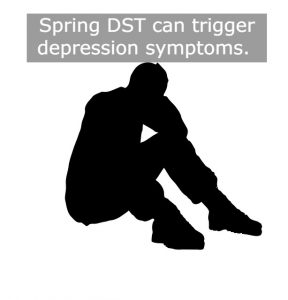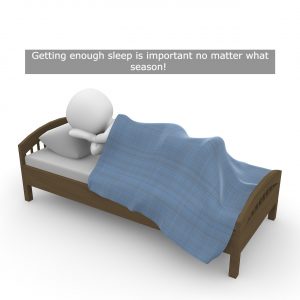
17 Mar How to Reset Your Body During Time Changes
If you’re in most of the U.S., you’ve grown used to the ‘spring forward’ (where you lose an hour) and ‘fall back’ (where you gain an hour) of Daylight Savings Time. For at least 24 hours (if not longer) twice a year, most people experience some level of fatigue, brain fog, and frustration with getting their bodies to recognize the new time on the clock. If you plan ahead, you can minimize the effects of this annual time change on your system.
Time Change Can Affect Your Health
The biggest way that the yearly time change tends to affect people is when it comes to sleep – and getting enough of it. In the fall, it may feel like you’re ‘sleeping in’ (although not everyone is able to fall back to sleep after checking their clock). In the spring, you run more risk of being overly tired because you’ve suddenly ‘lost’ that hour.
While your phone, laptop, and other smart devices may automatically update to the new time – your body doesn’t. According to WebMD, it takes an average of 24 hours to adjust for every hour of change. For some people, it may take more than 24 hours, for others it can take a full week to feel back to ‘normal’ after the daylight savings change.
Although it’s “only” an hour of time change, there is growing evidence that it can impact your health in significant ways. Various studies have shown a rise in the following in the period immediately after springtime DST:
- Workplace accidents
- Car accidents
- Heart attacks
- Increased depression
How to Handle DST:
Although daylight savings time changes can affect your health, there are steps that you can take to help your body adjust – especially during spring DST. Instead of waiting for your body to eventually adjust, try:
- Adjust Slowly: Begin the week before the time change. Start going to bed 15-25 minutes earlier and getting up 15-25 minutes earlier. As you get closer to the time change, you can adjust this to 30-45 minutes earlier.
- Use Light: Our bodies use light – natural light specifically – as a cue for what time it is. After the time change, try getting some natural light through a walk outside or even a window in the morning. When it’s time to rest, close curtains, dim lights, and avoid your electronic devices.
- Don’t Skip Breakfast: The sooner you eat in the morning, the sooner you tell your body that it’s time to be up and at ’em. The word breakfast comes from “breaking” your “fast” – when you were sleeping all night. So go ahead and make a healthy breakfast a first step in your day.
- Hydrate: Your body runs better when it’s properly hydrated. Jetlagged travelers should hydrate for the same reason. So don’t skip your water. Be extra sure you’re getting enough fluids this time of year.
You’ll adjust to the time change, but making it easier on your body – and your life – is the goal. If you notice you feel tired, grumpy, and aren’t at your best, don’t worry: soon you’ll be on the updated time…until it’s time to change your clock again!
At Body One PT, our team of expert Physical Therapists works with patients of all ages and activity levels and if you’re dealing with pain, injury, or movement problems, we’re ready to help get you back on track. We’re locally owned and operated, with three locations serving Central Indianapolis: North Indy/Carmel, Fishers, and Zionsville. Find out what makes us the best PT team in Indy: call or click today!
Source: https://www.ncbi.nlm.nih.gov/pmc/articles/PMC7302868/








